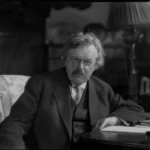A review of Marriage-Lite: The Rise of Cohabitation and its Consequences. By Patricia Morgan.
Institute for the Study of Civil Society, 2000.
For years now we have been told that cohabitation, or “trial marriages” are a good means of seeing if people are really compatible. Better marriages will result if such experimentation preceded them we are told.
Yet numerous studies over the years have come to rather different conclusions. A summary of this evidence is nicely presented in this volume. The truth is, cohabitation is nowhere near a “trial marriage”. The lack of commitment is the main difference. As a result, cohabitation does not prepare people for marriage. More accurately, it prepares them for divorce.
Indeed, the understanding that marriage involves a commitment for life, over against a temporary trial run, makes the two types of relationships markedly different. And as Morgan points out, those who have gone the route of cohabitation may well have trained themselves in this sort of easy escapism: “Cohabitation may teach people something about relationships that changes the way individuals view marriage and divorce, having a ‘knock-on’ effect which reduces commitment to marriage itself as a lifelong relationship. It may not only attract the divorce-prone, but make divorce more acceptable as a solution to problems, so that cohabitation itself may have a causal influence on susceptibility to divorce”.
This “escape hatch” mentality explains why cohabitation tends to be short-lived. Consider some of the figures. Overall, the median duration of a childless cohabitation is 19 months. And of those cohabitations that do not convert to marriage, they are about four times more likely to break down than marriages. Also, the longer two people cohabit, the less likely they are to marry.
Cohabitations that do produce children are even more likely to eventually dissolve, because when a woman becomes a mother, her chances of marrying are reduced even further. And when a cohabiting couple marries, they are fifty per cent more likely to get a divorce than couples who do not cohabit before marriage.
Furthermore, cohabiting couples report less satisfaction in their relationships than married couples do. Says Morgan, “In allowing more flexibility and freedom, cohabitation positively exposes people to conditions that are likely to generate problems in the relationship. While cohabitation is seen as a way of minimising the risk of family disruption and domestic violence, it paradoxically increases their likelihood”.
It is not just adults who are disadvantaged by cohabitation. Children also suffer when parents cohabit. One British study, for example, found that children living with cohabiting couples were 50 per cent more likely to have a mental health problem.
All of this information, based on careful long-term studies, merely confirms what most people knew by common sense all along. Any relationship that seeks the benefits of marriage while eschewing its responsibilities is bound to fail. The point is, all relationships are not the same. Marriage is not just some private life-style choice like so many other options. Marriage is a public commitment and a social obligation. Social and legal frameworks exist to make marriage a public institution which has public effects. When societies tamper with marriage or minimise its importance, all members of society suffer.
Indeed, as alternatives to marriage like cohabitation or same-sex marriage are given greater legal and social recognition, the institution of marriage is progressively weakened. And with it, so too is the well-being of children and the rest of society. For no other social institution is capable of raising children so successfully. And no other institution does a better job of providing social cohesion, the transmission of values and the education of character.
“The attack of the family has been the most obvious, enduring and successful expression of the counter-cultural revolution,” writes Morgan. What can be done to turn this around? She offers several proposals. One, we need to eliminate the anti-marriage bias which is so prevalent in our education system and school curricula, and treat “marriage as a desirable social good rather than one of many equally valid and viable lifestyles”. And two, the “role of the state ought not to be to recognise or institutionalise informal unions, but to outline the nature and consequences of cohabitation”.
The assault on marriage and the family may not so easily be overturned. But the information contained in this book can help all concerned to fight the war of ideas. Marriage does matter, and this book helps to show why it does.
[718 words]




















But Hollywood movies suggest otherwise. Then again, Hollywood suggest there are fun homosexuals in every family and circle of friends.